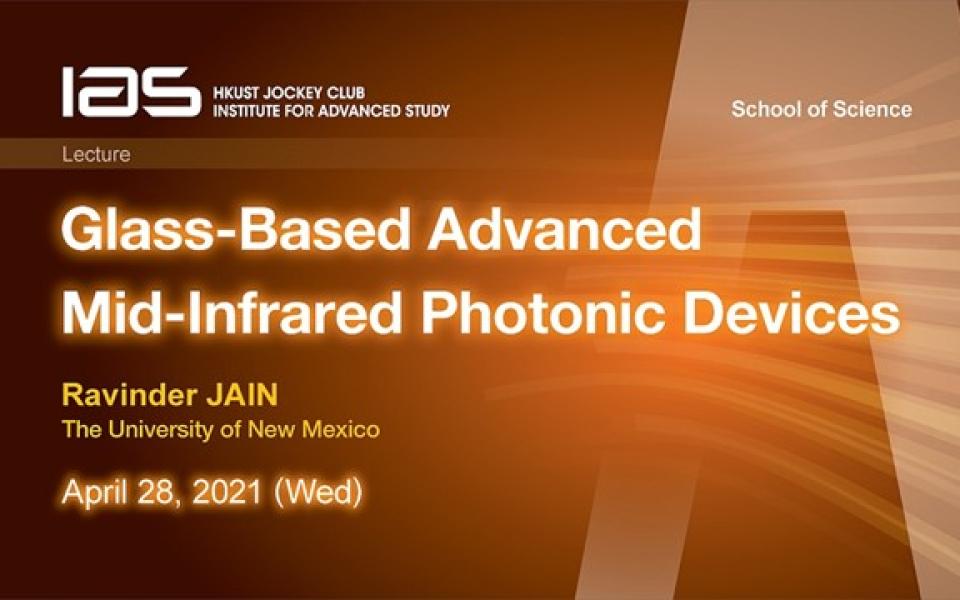For Attendees' Attention:
This lecture will be held
on-site at LT-K and online via zoom.
- To join the lecture in person, please register here for seat reservation.
(Seats are limited and will be given on a first-come-first-serve basis.)
- To attend the lecture online, please join the webinar at
https://hkust.zoom.us/j/99546885390
(Meeting ID: 995 4688 5390 / Passcode: 20210428)
Abstract
Advances in low-loss high purity glasses were initially driven by fiber-optic communications - and the related interest in developing low-loss optical fibers covering a variety of spectral regions - which in turn led to development of new glasses and fibers as rare earth and transition metal ion host media for numerous unique fiber amplifier and attenuator applications. Much lower Rayleigh scattering losses are achievable at longer wavelengths, which spurred the development of low-loss mid-infrared (mid-IR) fibers. This activity resulted in the emergence of three dominant families of mid-IR glass fibers, namely fluorides, chalcogenides, and tellurites. Out of these three families of mid-IR fibers and glasses, the fluoride glass fiber technology has emerged as the most mature because of its unique combination of broad transparency, glass stability, robustness, and its easy “fiberizability” into low-loss single-mode fibers.
The “fiberizability” of glasses is not only significant for fiber lasers and amplifiers, but is also a good measure of the glass stability, which is quite critical for making high-Q microresonators with a low amount of light loss due to scattering from crystallites and surface roughness. More recent work has focused largely on the development of “high optical nonlinearity” mid-IR glasses for applications ranging from Raman amplifiers and comb generators to continuum generation.
The speaker will review device optimization issues related to glass-based mid-IR optoelectronic devices, notably mid-IR fiber lasers and fiber amplifiers, nonlinear optic frequency convertors and comb generators, and microresonators for sensors and mid-IR microlasers. Specific achievements in this technology area - including the attainment of > 35 Watts of output power in 2.7 micron mid-IR fiber lasers - will be discussed, along with the prospect of achieving narrow linewidth (sub-megahertz) laser outputs in:
(a) microresonator lasers at 2.7 to 2.8 microns, and
(b) fiber-laser-pumped mid-IR DFB Raman fiber lasers spanning the entire mid-IR spectral range between 2 microns and 65 microns.
About the speaker
Prof. Ravinder Jain received his PhD in Electrical Engineering from the University of California, Berkeley in 1974. After spending over 15 years in industry, notably Bell Labs, Hughes Research Laboratories, and Amoco Technology Company, he joined the University of New Mexico and is currently a Professor with joint appointment in the Department of Electrical & Computer Engineering and the Department of Physics & Astronomy.
Prof. Jain’s major areas of research are quantum electronics, optoelectronics, electro-optics, and experimental solid-state physics. His interests include fiber optics, nanostructures, nonlinear optics, optical biosensors, photonic circuits and ultrafast phenomena. He is serving as an Associate Editor for Optics Express.
Prof. Jain is a Fellow of the Optical Society, the Institute of Electrical and Electronics Engineers, the International Society for Optics and Photonics (SPIE), and the American Physical Society. He is also a recipient of numerous professional awards including the SPIE Harold E. Edgerton Award in High-Speed Optics and the Fulbright Distinguished Chair Award.
